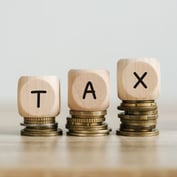The whole idea that lower consumer prices could generally be bad for the economy seems absurd.
Maybe lower oil prices will tempt me to buy a gas guzzler. I’ll put more pollution in the air. Maybe that will cause more global warming, or, if global warming turns out to be a myth, just cause people to cough more. But, assuming I can figure out how to do something about the gasoline fumes, how could me being able to drive around without worrying about gas prices be all that bad for the economy?
Along the same line, concerns about pollution and resource depletion aside, how could low prices for anything I like be all that bad?
One answer is that falling prices, or deflation, scare the Federal Reserve Board. In the past, some countries that have suffered from chronic deflation have seen their economies stuck in a pit of despair. Central bankers in those countries have had no idea how to get their economies out of the deflationary pit. Maybe Japan is still in that pit.
If the Fed thinks the U.S. inflation rate is too low, it might put off increases in the benchmark interest rates it controls to avoid letting the country slide into the deflationary pit.
See also: Winning on inflation could mean Yellen lets U.S. economy run hot
That could hurt insurers, by contributing (in a complicated way) to the atmosphere that leads rates on the corporate bonds long-term care insurance (LTCI) and long-term disability (LTD) insurance issuers put in their portfolios to be absolutely miserable.
I think the real problem with keeping rates low to avoid deflation, or ramping up big government spending programs to avoid deflation, is that neither low rates nor big spending programs directly affect the true cause of deflation: the fact that lending rules end up creating bigger and bigger populations of untouchables.
If the kind of deflation that scares the Fed was simply the result of product prices falling, then consumers would buy more products. Prices would soon stabilize, and consumers would have closets full of nice clothes, and memories of great restaurant meals.
Instead, in a grim deflationary economy, the rich get bargains. Other people have little, or nothing.
I think one reason, which is visible everywhere in the United States today, is that, when the economy is in a happy bubble, lenders get too loose with credit. They lend large sums to shiftless people.
When the bubble pops, lenders cut off the flow of money to the shiftless people, and to ordinary people get caught up in the bubble.
Modern central bankers think mainly about interest rate numbers, not the cost of lending restrictions. The central bankers try to get the economy going by doing what they can to lower interest rates.








 January 22, 2016 at 05:52 AM
January 22, 2016 at 05:52 AM










